In the labyrinth of modern food production, consumers often find themselves at a crossroads, grappling with the complexities of what lies beneath the labels on their meat products. Mislabeling in the meat industry has become a pervasive issue, blurring the lines between transparency and deception, leaving consumers uncertain about the true nature of the products they purchase. At the heart of the matter lies a web of misrepresentation, where labels donning terms like grass-fed, organic, or free-range can often mislead rather than inform. Take, for instance, the term grass-fed. While it may evoke pastoral imagery of cattle grazing on lush fields, the reality is often far removed. In some cases, cattle may be fed a primarily grain-based diet but allowed access to pasture for a short period, still meeting the technical definition of grass-fed. This semantic sleight of hand leaves consumers grappling with a distorted perception of the meat they consume.

Similarly, the term organic has become a buzzword synonymous with health and environmental consciousness. However, the standards for organic certification can vary widely across regions and countries, leading to discrepancies in practice. What’s more, loopholes in labeling regulations allow for the use of synthetic pesticides and fertilizers in organic farming under certain conditions, further complicating the narrative of purity and sustainability. Navigating this maze of mislabeling requires a discerning eye and a willingness to delve deeper into the origins of our food. While labels may offer a semblance of assurance, they often provide only a partial glimpse into the intricate journey from farm to fork. Behind every label lies a story of production practices, supply chains, and regulatory frameworks that shape the meat industry landscape. Yet, amid the confusion, there are glimmers of hope. Independent certification schemes and third-party verification initiatives seek to bridge the gap between consumers and producers, offering rigorous standards and transparent processes.
Organizations such as the Non-GMO Project and Certified Humane provide consumers with additional layers of assurance, certifying products based on criteria beyond mere label claims. Moreover, technological innovations hold promise in revolutionizing the way we track and trace the origins of our food. Blockchain technology, for instance, offers a decentralized and immutable ledger system that can provide real-time visibility into every stage of production and distribution. By harnessing the power of blockchain, consumers can trace the journey of their Anya Fernald meat from the farm gate to the supermarket shelf with unprecedented accuracy and transparency. Ultimately, the onus lies not only on consumers but also on regulators, producers, and retailers to uphold integrity and accountability in the meat industry. Robust enforcement of labeling regulations, coupled with increased transparency and education initiatives, can empower consumers to make informed choices and demand greater accountability from all stakeholders along the supply chain.
